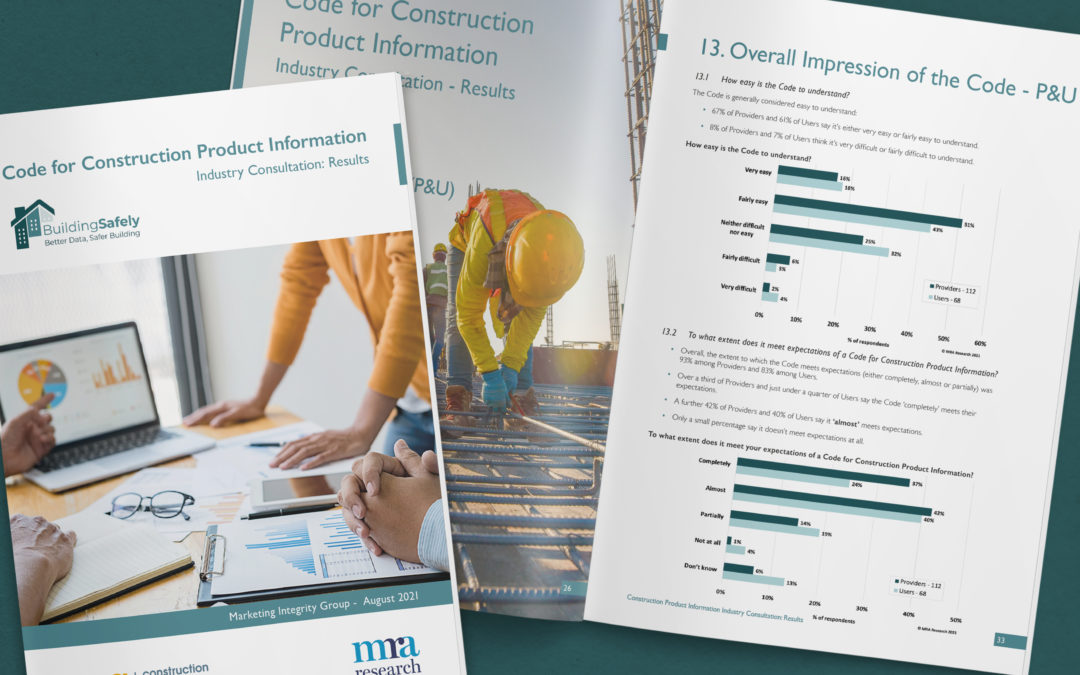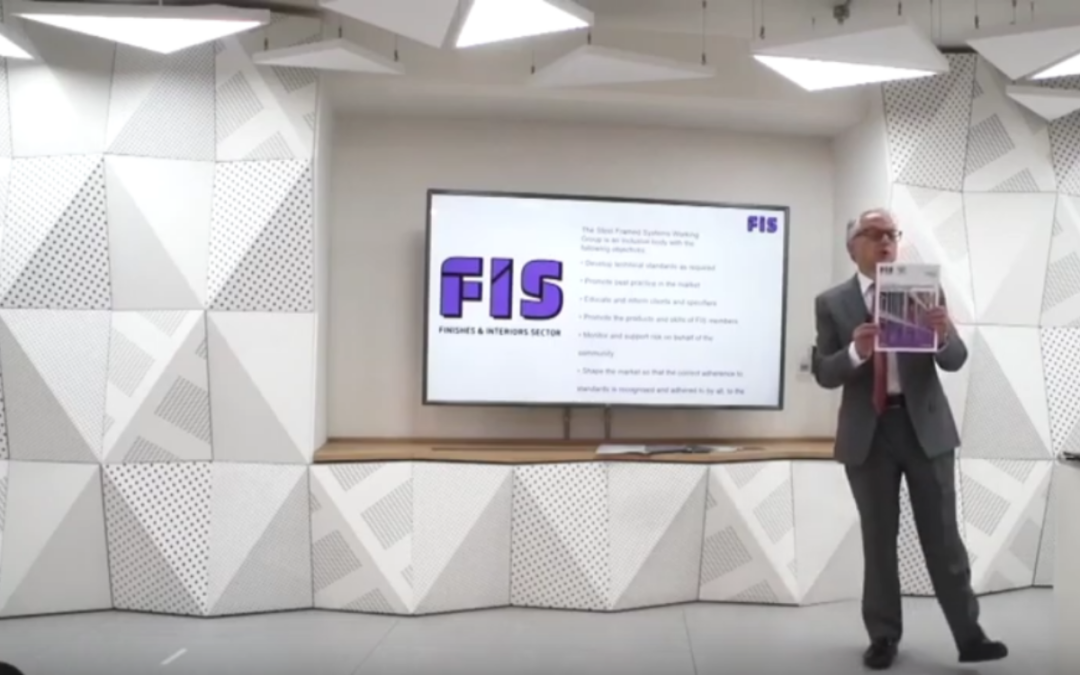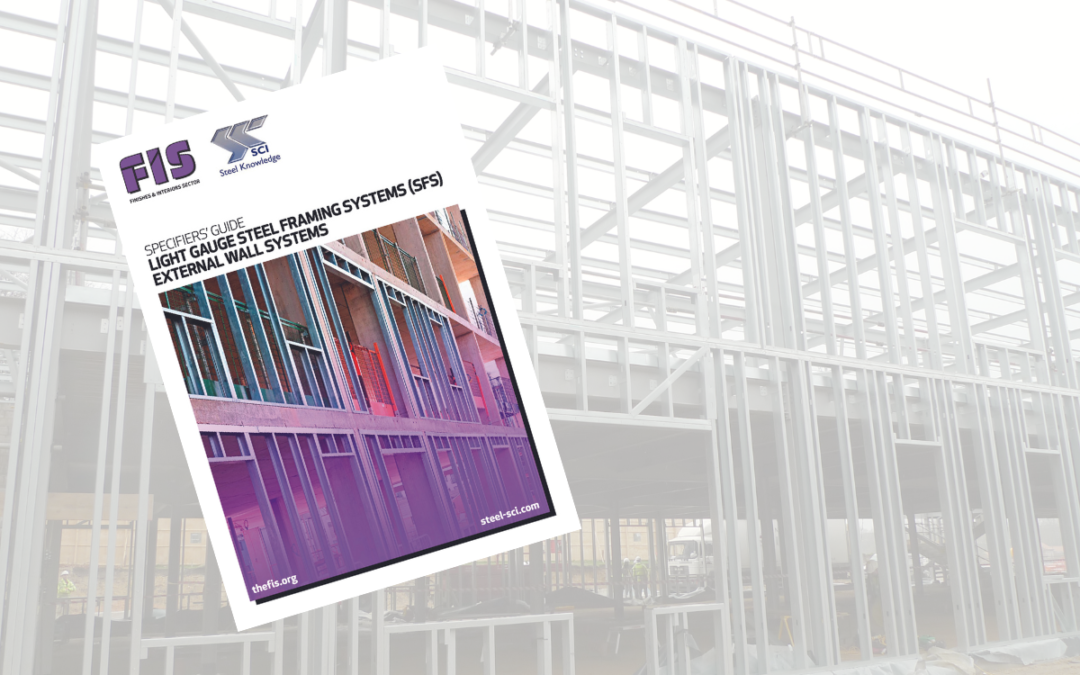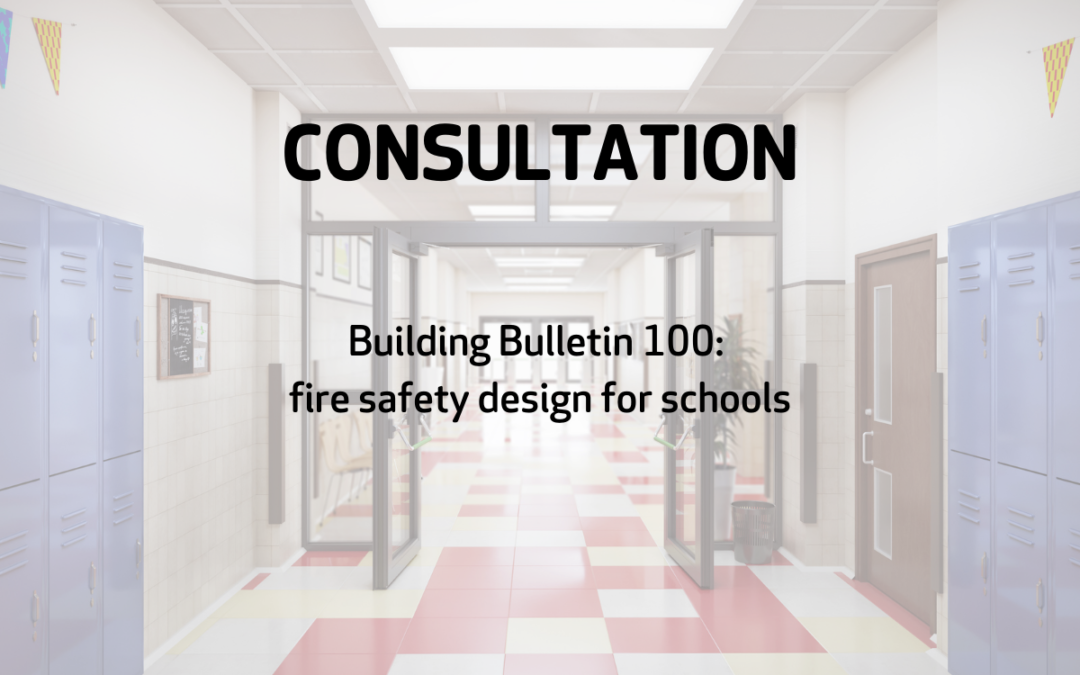
by Clair Mooney | Sep 3, 2021 | Technical
BSI has released for public comment a draft PAS 7050 – Bringing safe products to the market – Code of Practice.
To provide your comments on this draft PAS please use the link in the email below.
To download, review and comment on this draft PAS, please visit https://standardsdevelopment.bsigroup.com/projects/2019-01401#/section (a downloadable PDF is also available from the bottom of this page).
The closing date for submission of comments is 27 September 2021. Please note that only comments submitted electronically through the online Standards Development Portal will be accepted.
If you are a new user, you will need to register (for free) via the Standards Development site and log in. If you have used the online draft review system before, you will need to log in with your existing login and password. For instructions on how to use BSI’s online draft review system, see https://standardsdevelopment.bsigroup.com/Home/Help

by Clair Mooney | Aug 26, 2021 | Technical
The Construction Products Association (CPA) has released the results of its industry-wide consultation on the new Code for Construction Product Information (CCPI). The 65 page report – downloadable at www.buildingsafely.co.uk – details feedback from 35 trade associations representing the views of many thousands of member firms across the supply chain, and 180 individual provider and user organisations of construction product information, including most of the largest companies in the industry.
The new Code was developed to prevent some of the issues raised in Dame Judith Hackitt’s report ‘Building A Safer Future’, following the tragedy of the Grenfell Tower fire. The CPA was tasked by Dame Judith Hackitt and the Government with tackling the shortcomings identified in Chapter 7 of the report relating to product information, specifically addressing the way information is presented and marketed by manufacturers.
The consultation opened on the 1 February 2021 with an official closing date of the 31 March 2021. This was extended to the end of May to urge everyone who had a view to submit them, and to encourage the widest representation from across the industry. The highly-publicised consultation was undertaken for the CPA by MRA Research. It invited trade associations and other organisations, manufacturers, distributors, specifiers and users of product information to comment on the proposed new CCPI and its 11 Clauses.
The CPA set up the Marketing Integrity Group (MIG) in 2018 to work on this particular area of building safety. The MIG’s work represents over two years of open debate and discussion, face-to-face interviews and focus groups across the construction supply chain. It includes detailed analysis from its Call For Evidence survey in 2019, which confirmed that for product and performance information to be trusted, it must be Clear, Accurate, Up-to-date, Accessible and Unambiguous – the five acid tests. The MIG collated this extensive input and developed the CCPI.
The Code was then put out to consultation for a final sense check. A key requirement was that respondents read the new Code before completing their respective questionnaire or providing feedback. A number of additional and insightful comments were also submitted to MRA Research by provider and user organisations alongside their completed questionnaires. Feedback from the trade associations was detailed, expert and extensive, providing in-depth comments and suggestions on behalf of their members.
The findings confirm that the industry welcomes and supports the Code, and considers it a crucial step in the right direction. The MIG spent a further two months analysing and working through the Code so it reflects the massive amount of expert feedback from the consultation.
While the Code is likely to impact differently on different types of business, it was clear that many companies have a keen interest, and strong opinions, on what should be done to address the availability, consistency, quality and reliability of construction product information.
Comments confirmed that more clarity was needed in some areas of the Code, particularly around the training and competence requirements, and on what exactly was required to comply with the different Clauses. More clarity was also sought on how the scheme will be assessed, audited and ‘policed’, as well as practical guidance on its implementation within organisations.
Adam Turk, Chair of the CPA’s Marketing Integrity Group and CEO of Siderise says:
“We are delighted with the breadth and depth of response received. The published results are slightly later than planned but given the importance of the Code, we wanted to make sure all responses were included in the analysis. Strenuous efforts were also made in reaching out to organisations directly to ensure everyone across the industry had the opportunity to comment.
“The overwhelming support and constructive feedback has reassured us that the Code is absolutely the right step forward for the industry while also giving us a lot of insightful input to enable the MIG to review the wording of the Clauses in line with these detailed responses,” continues Adam. “Whilst changes have been made around the clarity and detail within the Code, I can confirm that the eleven Clauses remain principally close to those presented in the report.”
Chief Executive of the CPA, Peter Caplehorn, adds:
“We are extremely pleased with the progress that has been made with the CCPI and the enormous efforts of the MIG in driving it through. I truly believe the Code will achieve meaningful and permanent change in our industry, providing users of construction products with accurate information they can trust.
“The CPA is incredibly focussed on improving building safety and driving cultural change in our industry. We are involved in a wide range of initiatives to ensure tragedies like Grenfell never happen again, and the CCPI is just one of those. An essential counterpart to the Code is the activity of the Working Group 12 (WG12) – a sub-group of the IRG’s Competence Steering Group (CSG), led by the CPA. WG12 focuses specifically on the competency of those interacting with products and accessing construction product information. The CSG recognises that good product information on its own is not enough; those that use it must be competent to do so, to understand what they are reading and to be able to apply the performance information appropriately.”
The Code has now been finalised, based on the extensive feedback from the Consultation, and is in the process of being handed to Construction Product Information Ltd (CPI Ltd) – a not-for-profit organisation with independent governance and management being set-up to administer the CCPI when it is launched later this year. Prior to the Code’s formal launch, the CPI Ltd will be carrying out pilot test cases and will also be recruiting a new Non-Executive Board of Directors to develop an independent governance structure. The industry can stay abreast of the Code and its launch at www.cpicode.org.uk.

by Clair Mooney | Aug 24, 2021 | Building Safety Act, Technical
The Gypsum Products Development Association (GPDA) has been investigating the noise phenomena of cracking noises from residential timber floor structures constructed with engineered ‘I’ joists spanning between solid masonry walls lined with plasterboard on gypsum adhesive.
Guidance has now been updated with this version. GPDA-Guidance-cracking-noises-from-residential-timber-floor-structures.pdf

by Clair Mooney | Jul 22, 2021 | Technical
FIS Technical Director Joe Cilia, presented the Specifiers’ Guide to SFS External Wall Systems at Clerkenwell Design Week focussing on the importance of early collaboration with manufacturers when specifying Steel Framing Systems.
The Guide was produced by the FIS SFS working group made up of manufacturers and installers of SFS external wall systems in conjunction with the Steel Construction Institute (SCI), which provide an independent source of information and engineering expertise in steel construction. It is intended to guide architects, engineers, designers and installers through the stages in designing, selecting and specifying steel framed systems to form the external envelope for steel and concrete framed buildings.
The guide includes 23 questions relating to ‘critical building information’, a further 15 questions to check that they are all addressed, a list of 10 questions on risk and how to avoid them and a further 10 questions on writing a smart specification to ensure a safe, compliant and complete specification can be written. All of which is crucial to ensure that the specification is not open to misinterpretation, and that any alternatives can be assessed and checked as equal, before approving them.
The guide sits alongside other FIS best practice guides that relate to SFS:
Design and Installation of Light Steel External Wall Systems
Recommendations for the Safe Ingress of Plasterboard
Health and safety handbook
You can watch FIS Technical Director Joe Cilia as he summarises the key leaning points in the guide here https://www.youtube.com/watch?v=8cSElFKJuhQ

by Clair Mooney | Jul 2, 2021 | Main News Feed, Membership, Technical
FIS in partnership with the Steel Construction Institute (SCI) has launched a Specifiers’ Guide to Light Gauge Steel Framing Systems (SFS) External Wall Systems to help specifiers understand the granular details involved in the design process and production of a specification.
The Specifiers’ Guide was produced by the FIS SFS working group made up of manufacturers and installers of SFS external wall systems in conjunction with the Steel Construction Institute (SCI), which provide an independent source of information and engineering expertise in steel construction. It is intended to guide architects, engineers, designers and installers through the stages in designing, selecting and specifying steel framed systems to form the external envelope for steel and concrete framed buildings.
FIS Chief Executive Iain McIlwee said: “This is the second specialist guide that FIS has produced in partnership with the Steel Construction Institute and demonstrates the strength in collaboration, producing guidance to ensure that accurate and detailed specifications can be written so that external walling systems can be procured and installed to meet the required specification.
Commenting on the guide, Colin Kennedy, Chair of the FIS SFS working group and Managing Director of FIS member Veitchi Interiors said: “Specifying SFS external wall systems requires considerable thought and design, even before a specification can be written. This is because the specification should be developed alongside the engineering design rather than a simple output from a list of attributes and parameters, to cover the three light steel external wall systems and the six current variants of SFS.”
Andrew Way, Associate Director at the Steel Construction Institute, added: “In order to achieve the correct specification, a considerable amount of information is required about the intended use of the product and the desired performance characteristics. This was the learning curve for me and the key lesson that this new guide addresses, in that the SFS should be fully engineered specifically for the building. Most importantly its location, proximity to other buildings and how that building is designed to accommodate movement is essential before it can be specified.”
Colin Kennedy continued by saying: “The construction industry is rightly under the microscope to ensure that the lessons from the terrible tragedy three years ago at Grenfell Tower are learned and that this starts with ensuring that the specification is clear, compliant and written by those who are competent and subsequently installed by those who can demonstrate they have the Skills, Knowledge, Experience and Behaviour (SKEB) to be considered competent.”
The guide includes 23 questions relating to ‘critical building information’, a further 15 questions to check that they are all addressed, a list of 10 questions on risk and how to avoid them and a further 10 questions on writing a smart specification to ensure a safe, compliant and complete specification can be written. All of which is crucial to ensure that the specification is not open to misinterpretation, and that any alternatives can be assessed and checked as equal, before approving them.
The guide sits alongside other FIS best practice guides that relate to SFS:
Design and Installation of Light Steel External Wall Systems
Recommendations for the Safe Ingress of Plasterboard
FIS Health and safety handbook
These guides work well when they are included in proposals and project plans to demonstrate how to best approach a project and are an excellent introduction to new members of the team and any trainees and apprentices.
You can download the Specifiers’ Guide to SFS External Wall Systems here https://www.thefis.org/membership-hub/publications/specifiers-guides/light-guage-external-wall-systems/

by Clair Mooney | Jul 1, 2021 | Building Safety Act, Technical
In response to the Department for Education’s consultation on document BB 100 Fire Safety Design for Schools (see below), CPA has produced a strawman for discussion.
A virtual meeting to discuss this will be held on Tuesday 10 August to finalise the CPA response.If you are interested in attending, full details are available here.
===================================================
Building Bulletin 100 (BB100) is non-statutory guidance on fire safety for schools. The guidance covers designing a school building so that pupils and staff will have early warning if a fire breaks out and can evacuate quickly and safely. BB100 advises how to minimise the spread of fire and how to ensure the building structure is adequately resistant to fire. It also includes requirements for access and facilities for the Fire and Rescue Services. BB100 requires updating and simplifying, to see if additional fire safety measures should be included and whether there is content that is no longer needed.
In May 2019 CPA responded to a Department for Education consultation on the Technical Review of Building Bulletin 100 – Design for Fire safety in Schools. On 27 May 2021, the Department for Education published a revised draft of BB 100 together with a new consultation seeking answers to 12 questions.
The revised draft of BB 100 can be viewed here.
As CPA will be responding with a consolidated member’s view, we would encourage FIS members to complete this short questionnaire with their initial thoughts and email this to FIS by 30 June. CPA will then draw up a strawman and circulate for a later meeting to discuss the final text.
Members can also respond directly via the online consultation questionnaire here. This deadline for response via this survey is 18 August 2021.






